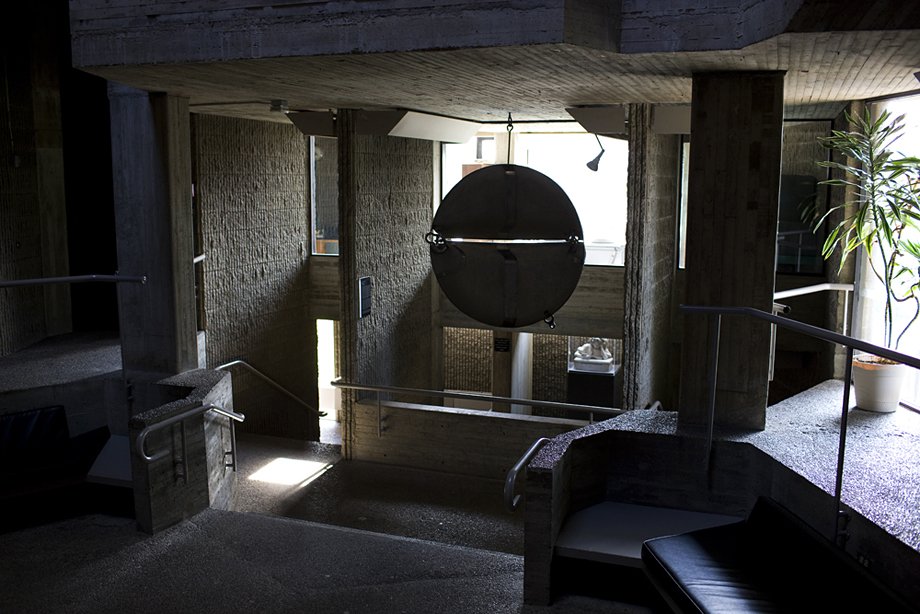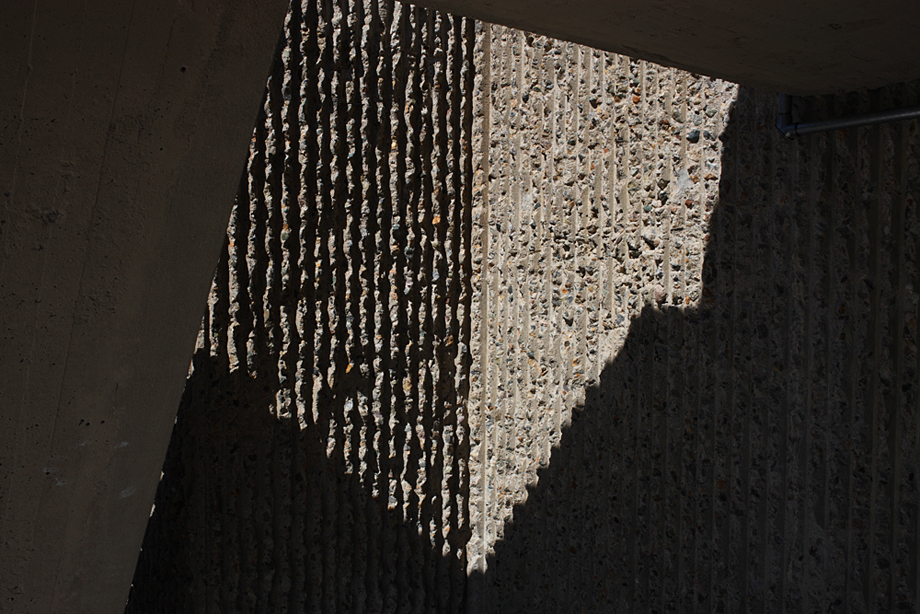Submitted by WA Contents
Were Brutalist Buildings on College Campuses Really Designed to Thwart Student Riots?
United Kingdom Architecture News - Oct 22, 2013 - 10:47 6325 views

Art and Architecture Building, Yale University
Chances are good that if you went to college in the United States after, say, 1975, your campus featured at least one imposing, bunker-like concrete building in the architectural style known as Brutalism. Colorfully translated from Le Corbusier’s purely descriptive term béton brut (or raw concrete), Brutalist architecture—as it was developed and practiced during the 1950s, '60s, and '70s by architects like Alison and Peter Smithson in the U.K. and Paul Rudolph in America—favored heavy, solid shapes cast in intricately textured reinforced concrete, sharp angles, and a general sense of what architecture historians describe as “heroism” or “monumentalism.” Along with the contrastingly sleek vocabulary of glass and steel articulated by Mies Van Der Rohe, Brutalism is what probably comes to mind when people are presented with the term High Modernism in the context of architecture.
During its heyday, Brutalism was both big and big, especially at universities eager to demonstrate their modernity bona fides.The 1960s and early 1970s saw venerable institutions across the country building these hulking structures to house performing arts centers, libraries, or other departments; in some cases, entire campuses were conceived in the style. Yet the Brutalism boom started to crumble even as it approached critical mass—very quickly, students, faculty, and community members came to a widely shared (and rare) consensus that the new buildings were, in a word, ugly. That judgment is amatter of taste, of course, but Brutalism’s reputation has never quite recovered from the insult.

Dana Arts Center, Colgate University

Dana Arts Center, Colgate University
However, aesthetic disagreements do not justify slander. Assuming that your campus did have a Brutalist building, you’ve probably been told a lie about it that goes something like, “Hideous, right? The administration chose that design because it was good at preventing student riots and occupations.” The notion, apparently, is that the style’s typically complex floor plans, dazzling edifices, and oddly placed entrances would discourage those kinds of activities. I’ve heard versions of this tall tale used to explain both the International Affairs Building at my alma mater, Columbia, as well as the North Academic Center at City College, looming as it does a few blocks from my home in Harlem. Colleagues have heard similar apologies in reference to structures at schools all over the place. For years, we’ve all passively accepted this story; however, a little research shows that it is exactly that—a myth.
Though the riot-prevention narrative is widely known, every architectural historian or critical source that I consulted viewed it as extremely dubious. For one thing, the claim is somewhat anachronistic. Many campus Brutalist projects were planned (if not totally completed) before the student movements of the late '60s and early '70s really took off, so crafty administrators would have to have been very prescient to foresee the countercultural-quashing usefulness of any particular style. Plus, as one practical-minded source put it, “not only was [Brutalism] in vogue, architecturally speaking, but building in concrete was way, way cheap. Hence its widespread use in institutional building” during the period.

North Academic Center, City College of New York
But more to the point, the philosophy behind Brutalism—which was developed in the '50s and early '60s, again well before the student rebellions began—was directly opposed to repression and control, a detail which makes the style’s later association with totalitarianism all the more ironic. Mark Pasnik, a professor and practicing architect, explains that the proponents of Brutalism had “collective aspirations” in mind when designing their awe-striking monuments:
These buildings were considered to be strong and robust, but those were attributes about permanence, not about controlling populations. In fact, many of the architects involved were purists about architecture and used architecture to reflect positive human aspirations. Figures like Paul Rudolph and the Smithsons were utopian, not dystopian, in their outlook. It would be wrong to brandish them as control agents.
Indeed, according to scholar Timothy Rohan, Rudolph, the architect behind Yale’s controversial Art and Architecture Building—one of the earliest and most influential campus Brutalist works—imagined his creations as “educational buildings that were intended to be richly expressive citadels for [high] culture” against the corrosive influences of “mass culture, overpopulation, and science.” Rohan writes in his dissertation of Rudolph’s sad decline as, increasingly, “students equated the monumental concrete architecture of the early and mid-60s with the values of the ‘Establishment.’ ”

Art and Architecture Building, Yale University

Detail of Art and Architecture Building, Yale University
How this association became so strong is hard to pin down precisely, but Rohan convincingly points out that Rudolph’s buildings and the many lesser copies inspired by them “would become scenes of political protest where the feeling of estrangement between the generations would become most apparent … This new generation would view Rudolph's monumental theatrics … as part of the Establishment's attempts to create an illusionary facade of seamless power and authority.”
From there, it’s not hard to see how the myth of riot-policing became unfairly inscribed on Brutalism’s concrete slabs.
With additional reporting from Emma Roller. The Eye thanks Christopher Rawlins, architect and author of Fire Island Modernist; Karina Bishop and Shannon Garrison of the University of Pennsylvania School of Design; Mark Pasnik of the Wentworth Institute of Technology; and architectural photographer Chris Mottalini.
J. Bryan Lowder is the assistant editor of Outward, Slate’s LGBTQ section, and the editorial assistant for culture.
> via slate
